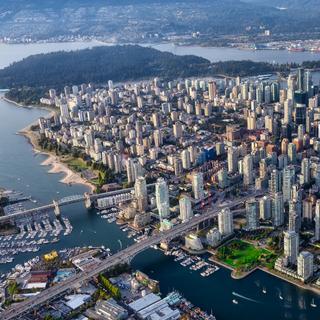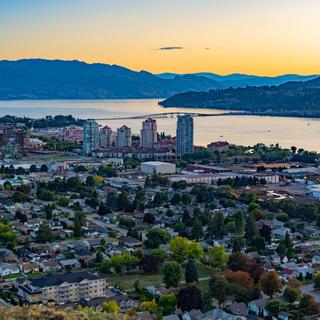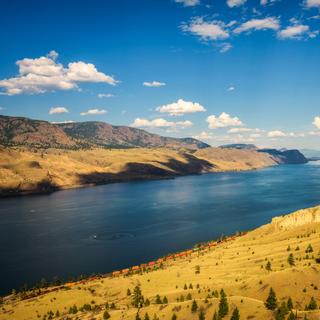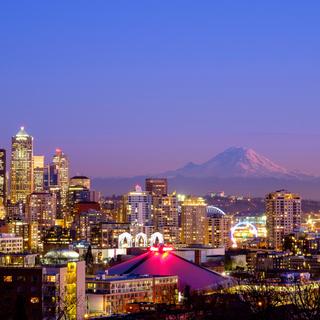Victoria weather and climate in 2025
Day
22 °C
Night
13 °C
Sea
12 °C
Precipitation
15 mm
in month
Rainy days
5 days
in month
Daylight
15 hours
average
Sunshine
10 hours
average
Humidity
75 %
Weather charts for Victoria
Find more destinations like this
Closest destinations for Victoria
Closest cities for Victoria
Weather overview for Victoria
Weather overview
Victoria, Canada boasts a mild climate year-round, distinguished by its dry, temperate summers and relatively rainfall-rich winters. Average daytime temperatures vary, with the warmth peaking in July and August, while the coolest days are felt in December and January. Precipitation is regular in the colder months, often leading to lush green landscapes, while the summer months witness a dramatic dip in the number of wet days. Despite this variation, conditions remain moderate, rarely plunging into extremes, making Victoria a comfortable place regardless of the season.
January weather
January in Victoria brings the crisper days of the year, with highs around 7 °C (45 °F). With 18 days of rain, it's advisable to have a sturdy umbrella at hand. Nighttime remains cool with temperatures cutting down to 3 °C (37 °F).
February weather
By February, Victoria begins to feel a slight shift, with daytime highs reaching 9 °C (48 °F). Rain days decrease to 15 days, and the evenings remain cool, averaging 3 °C (38 °F).
March weather
March in Victoria offers more daylight and milder conditions, with daytime temperatures rising to 11 °C (51 °F). Meanwhile, the number of wet days stays around 16 days indicative of the lingering rains.
April weather
April brings a significant reduction in rainy days to about 13 days in Victoria, and day temperatures average a pleasant 14 °C (56 °F). Atmospheric evenings are the norm, with night temps dropping to 6 °C (42 °F).
May weather
May in Victoria ushers in the warmer days with averages around 17 °C (62 °F) and a retreat in rainfall to just 10 days. Night temperatures are comfortably mild, staying around 8 °C (47 °F).
June weather
June sees the onset of summer with high temperatures averaging 20 °C (67 °F) and nights warming to 11 °C (52 °F). The month is also marked by the driest spell, with rain falling on a scant 8 days.
July weather
July in Victoria is the warmest month, proudly boasting daytime highs of 22 °C (72 °F), and a night's low at an easy 13 °C (55 °F). The summer is in full swing with minimal rain across 5 days.
August weather
The enchanted summer continues through August in Victoria, with temperatures peaking at 22 °C (72 °F) during the day, and nights are a soothing 13 °C (56 °F). The dry weather holds firm with only 6 days of rain expected.
September weather
September's arrival in Victoria marks the gradual transition to cooler days, with average highs settling at 20 °C (67 °F), while the evenings drop to 11 °C (51 °F). Rainfall ticks up slightly to 8 days.
October weather
October in Victoria is characterized by a more pronounced autumn chill with day highs reaching around 14 °C (57 °F), and rainy days increasing to 14 days as the season progresses.
November weather
The onset of November ushers in Victoria's pre-winter mood, as temperatures cool to 9 °C (49 °F) during the day and rain is witnessed on 19 days, signaling the wet season's commencement.
December weather
December embraces the winter spirit in Victoria with daytime averages of a chilly 7 °C (44 °F), while the night crawls down to a mere 2 °C (36 °F). Rainfall is frequent at 19 days, contributing to the festive atmosphere.
FAQs
How often does it rain in Victoria in January?
January is marked by frequent rain in Victoria, with approximately 18 days of rainfall. If you're planning outdoor activities, be sure to check the local forecasts.
As spring approaches, does Victoria warm up significantly in February?
February sees a modest incline in temperature, it's still the tail end of winter, so while the highs hit 9 °C (48 °F), you'll need to bundle up.
Does March in Victoria see a lot of rain?
March can still be quite rainy in Victoria with about 16 days of precipitation, although you'll notice longer intervals of clear skies.
How much does it rain in Victoria in April?
April showers are certainly less intense in Victoria, with rainfall occurring on an average of 13 days, hinting at the approaching drier season.
What's the likelihood of rain in Victoria during May?
Rain in Victoria becomes scarce as May progresses, dropping to about 10 days, making way for the much-awaited dry season.
Is June a good month for beach activities in Victoria?
June's temperate climate, with long sunny hours reaching 8 hours daily, makes it perfect for visiting the beach, although the ocean might still carry a spring chill.
How warm do the days get in Victoria in July?
Days in July are delightfully warm, reaching an average of 22 °C (72 °F), inviting residents and visitors to relish the outdoors.
With summer at its peak, how hot does Victoria get in August?
August maintains the summer peak with the thermometer hitting highs of 22 °C (72 °F), ideal for soaking up the sun and exploring the outdoors.
Is the weather in Victoria still warm in September?
September still affords warmth with daytime temperatures hitting 20 °C (67 °F), making it a pleasant time for outdoor festivals or strolls along the harbor.
Do I need a heavy coat in Victoria during October?
While you might not need a heavy coat throughout October in Victoria, it's advisable to dress in layers and keep a rain jacket handy for the average 14 days of rainfall.
As winter approaches, how much does temperature drop in Victoria in November?
November sees a noticeable dip with the daytime high cooling to 9 °C (49 °F), an indication to dust off the warmer attire.
What temperatures can I expect in Victoria during the day in December?
December sees daytime temperatures hovering around 7 °C (44 °F), so it's recommended to wear warm clothes whilst enjoying winter's charm.
We make the most from 40 years of historical weather data to predict the best weather conditions.
Deciding on where to go for a holiday is hard sometimes. Get inspired by the most popular destinations.
We aggregate data from combining multiple weather sources to ensure accuracy of the highest order.







